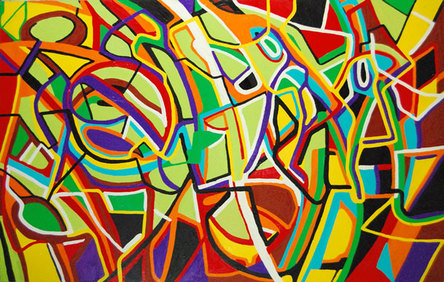
Unity artwork can be subtle, but the achievement of unity can be dramatic, especially when used in conjunction with variety. It can involve lines that are different widths, lengths, straightness, or curvatures, which create more visual interest than lines that are all the same.Īrtists can use linework, color schemes, organic or geometric shapes, or a variety of textures to create examples of unity in art. The quality of variety can be achieved through an assortment of lines, shapes, values, textures, or color schemes. Understanding what is variety in art, involves seeing visual elements as keys to avoiding sameness and creating visual interest. Paying attention to color temperature can help convey a certain concept, while tonal value can unify elements using a single color. On the other hand, complementary colors are in opposition to each other on the color wheel, but can still help create a sense of harmony. On the one hand, colors that are adjacent on the color wheel are referred to as analogous colors and can easily create harmony. Unity through color can be achieved in many ways. Tree of Life (1910-1911) by Gustav Klimt Gustav Klimt, Public domain, via Wikimedia Commons Even when these connections, which are often in the background, are subtle, continuation can create a strong sense of unity. They do not have to be literally connected, sometimes continuation can be achieved through implication. Continuation can also connect the two separate elements of an artwork. When elements are in alignment, meaning that they are lined up or organized according to specific configurations, unity is created in those sections of a composition.Ĭontinuation refers to cases where elements of art such as line or shape are used to connect one section of an artwork to another. Elements can be aligned vertically, horizontally, diagonally, in a straight row, left to right, or top to bottom, in a column. The very same element can have a different effect based on its alignment. How elements appear in a composition is as paramount as where they are placed. When similar colors are repeated sequentially, the viewer’s attention is directed around the work, creating a sense of movement and therefore visual harmony. For example, color can be used to create rhythm in an artwork. These repetitive elements can be positioned in a consistent manner or a particular style, creating patterns and rhythm. Repetition refers to the repetition of similar or continuing elements in various parts of the composition. However, even the placement of dissimilar elements enhances the sense of unity in an artwork.Ī Sunday Afternoon on the Island of La Grande Jatte (1886) by Georges Seurat, illustrating the use of unity in art through shape and form Georges Seurat, Public domain, via Wikimedia Commons When similar elements in a composition are positioned close to one another, they appear as a group. It refers to the closeness of objects or figures in a composition. Proximity is a visual device that can be used to create unity. There are several methods of creating unity in a work of art with the five main methods being proximity, repetition, alignment, continuation, and color. In a unified artwork, the elements look like they belong together. With unity, the elements of a composition work together emphasizing their similarity. The unity art definition refers to the visual quality of oneness achieved through the effective incorporation of the elements and principles of art.

Guerrilla de Eliseo Velásquez (1988) by Fernando Botero Fernando Botero, Public domain, via Wikimedia Commons Creating new and unexpected combinations of the elements of art, variety invites viewers to linger in front of a work of art, indulging in its radical rhythm. While unity makes a composition feel complete and cohesive, variety infuses it with a sense of dynamism.

The dynamic between the principles of variety and unity brings visual interest to any image. Striking a Balance Between Unity and Variety in Art 5.3 How Is Variety Achieved in an Artwork?.5.2 What Is the Difference Between Harmony and the Unity Art Definition?.5.1 Does Variety Break Up Unity in a Design?.3.1 Andy Warhol’s Marilyn Diptych (1962).2.3 Wassily Kandinsky’s Circles in a Circle (1923).2.2 Vincent van Gogh’s Wheatfield with Crows (1890).2.1 Katsushika Hokusai’s The Great Wave (1830).1 Striking a Balance Between Unity and Variety in Art.


 0 kommentar(er)
0 kommentar(er)
